Kaoutar El Maghraoui
Paged Attention Meets FlexAttention: Unlocking Long-Context Efficiency in Deployed Inference
Jun 08, 2025Abstract:Large Language Models (LLMs) encounter severe memory inefficiencies during long-context inference due to conventional handling of key-value (KV) caches. In this work, we introduce a novel integration of PagedAttention with PyTorch's FlexAttention, addressing internal fragmentation and inefficiencies associated with monolithic KV cache allocations. Implemented within IBM's Foundation Model Stack (FMS), our fused attention kernel efficiently gathers scattered KV data. Our benchmarks on an NVIDIA L4 GPU (24GB) demonstrate significantly reduced inference latency, growing only linearly (~2x) with sequence length from 128 to 2048 tokens when utilizing a global KV cache, compared to exponential latency increases without caching. While peak memory usage remains largely unchanged for single-step evaluations (dominated by model weights and activations), paged attention causes minimal incremental memory usage, observable only at sequence lengths exceeding 2048 tokens due to its power-of-two cache allocations. We open-source the full implementation and discuss its implications for future long-context model deployment.
Analog Foundation Models
May 14, 2025Abstract:Analog in-memory computing (AIMC) is a promising compute paradigm to improve speed and power efficiency of neural network inference beyond the limits of conventional von Neumann-based architectures. However, AIMC introduces fundamental challenges such as noisy computations and strict constraints on input and output quantization. Because of these constraints and imprecisions, off-the-shelf LLMs are not able to achieve 4-bit-level performance when deployed on AIMC-based hardware. While researchers previously investigated recovering this accuracy gap on small, mostly vision-based models, a generic method applicable to LLMs pre-trained on trillions of tokens does not yet exist. In this work, we introduce a general and scalable method to robustly adapt LLMs for execution on noisy, low-precision analog hardware. Our approach enables state-of-the-art models $\unicode{x2013}$ including Phi-3-mini-4k-instruct and Llama-3.2-1B-Instruct $\unicode{x2013}$ to retain performance comparable to 4-bit weight, 8-bit activation baselines, despite the presence of analog noise and quantization constraints. Additionally, we show that as a byproduct of our training methodology, analog foundation models can be quantized for inference on low-precision digital hardware. Finally, we show that our models also benefit from test-time compute scaling, showing better scaling behavior than models trained with 4-bit weight and 8-bit static input quantization. Our work bridges the gap between high-capacity LLMs and efficient analog hardware, offering a path toward energy-efficient foundation models. Code is available at https://github.com/IBM/analog-foundation-models .
Pipeline Gradient-based Model Training on Analog In-memory Accelerators
Oct 19, 2024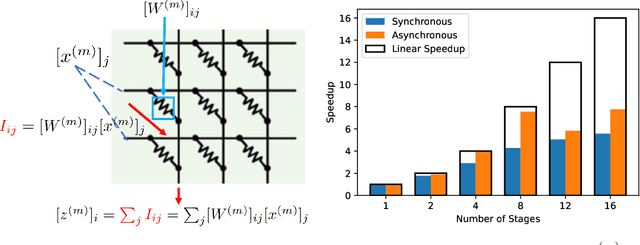

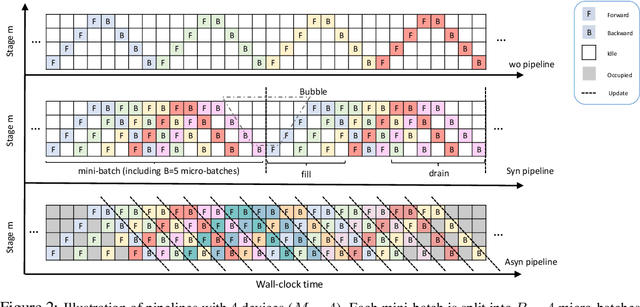

Abstract:Aiming to accelerate the training of large deep neural models (DNN) in an energy-efficient way, an analog in-memory computing (AIMC) accelerator emerges as a solution with immense potential. In AIMC accelerators, trainable weights are kept in memory without the need to move from memory to processors during the training, reducing a bunch of overhead. However, although the in-memory feature enables efficient computation, it also constrains the use of data parallelism since copying weights from one AIMC to another is expensive. To enable parallel training using AIMC, we propose synchronous and asynchronous pipeline parallelism for AIMC accelerators inspired by the pipeline in digital domains. This paper provides a theoretical convergence guarantee for both synchronous and asynchronous pipelines in terms of both sampling and clock cycle complexity, which is non-trivial since the physical characteristic of AIMC accelerators leads to analog updates that suffer from asymmetric bias. The simulations of training DNN on real datasets verify the efficiency of pipeline training.
A Provably Effective Method for Pruning Experts in Fine-tuned Sparse Mixture-of-Experts
May 28, 2024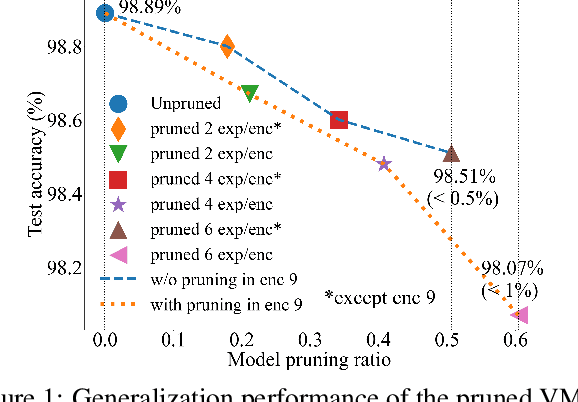
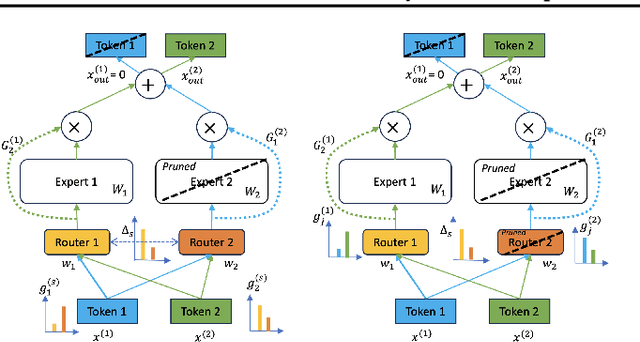
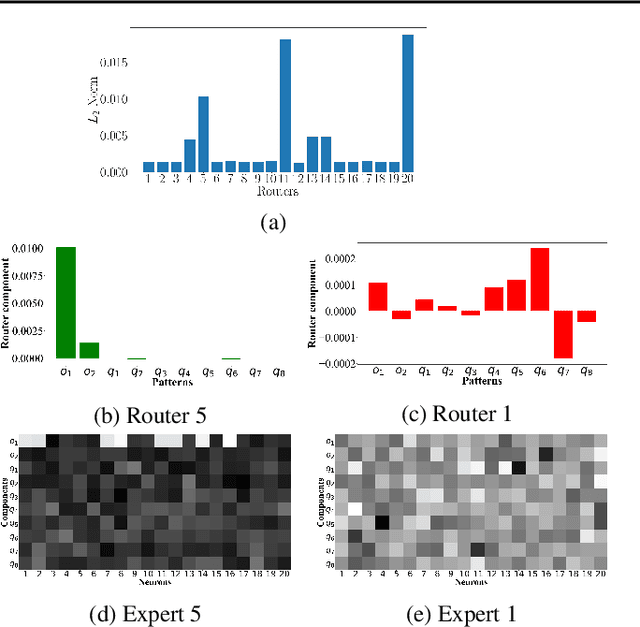
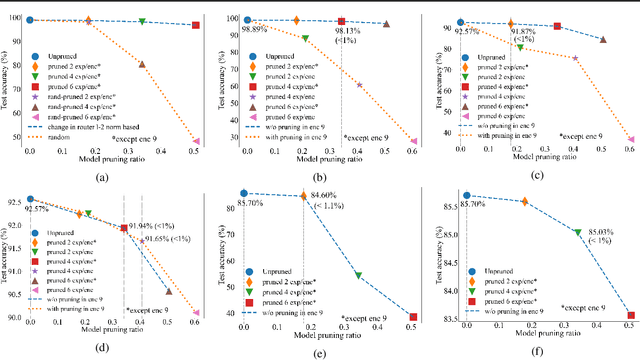
Abstract:The sparsely gated mixture of experts (MoE) architecture sends different inputs to different subnetworks, i.e., experts, through trainable routers. MoE reduces the training computation significantly for large models, but its deployment can be still memory or computation expensive for some downstream tasks. Model pruning is a popular approach to reduce inference computation, but its application in MoE architecture is largely unexplored. To the best of our knowledge, this paper provides the first provably efficient technique for pruning experts in finetuned MoE models. We theoretically prove that prioritizing the pruning of the experts with a smaller change of the routers l2 norm from the pretrained model guarantees the preservation of test accuracy, while significantly reducing the model size and the computational requirements. Although our theoretical analysis is centered on binary classification tasks on simplified MoE architecture, our expert pruning method is verified on large vision MoE models such as VMoE and E3MoE finetuned on benchmark datasets such as CIFAR10, CIFAR100, and ImageNet.
Grassroots Operator Search for Model Edge Adaptation
Sep 20, 2023



Abstract:Hardware-aware Neural Architecture Search (HW-NAS) is increasingly being used to design efficient deep learning architectures. An efficient and flexible search space is crucial to the success of HW-NAS. Current approaches focus on designing a macro-architecture and searching for the architecture's hyperparameters based on a set of possible values. This approach is biased by the expertise of deep learning (DL) engineers and standard modeling approaches. In this paper, we present a Grassroots Operator Search (GOS) methodology. Our HW-NAS adapts a given model for edge devices by searching for efficient operator replacement. We express each operator as a set of mathematical instructions that capture its behavior. The mathematical instructions are then used as the basis for searching and selecting efficient replacement operators that maintain the accuracy of the original model while reducing computational complexity. Our approach is grassroots since it relies on the mathematical foundations to construct new and efficient operators for DL architectures. We demonstrate on various DL models, that our method consistently outperforms the original models on two edge devices, namely Redmi Note 7S and Raspberry Pi3, with a minimum of 2.2x speedup while maintaining high accuracy. Additionally, we showcase a use case of our GOS approach in pulse rate estimation on wristband devices, where we achieve state-of-the-art performance, while maintaining reduced computational complexity, demonstrating the effectiveness of our approach in practical applications.
Using the IBM Analog In-Memory Hardware Acceleration Kit for Neural Network Training and Inference
Jul 18, 2023Abstract:Analog In-Memory Computing (AIMC) is a promising approach to reduce the latency and energy consumption of Deep Neural Network (DNN) inference and training. However, the noisy and non-linear device characteristics, and the non-ideal peripheral circuitry in AIMC chips, require adapting DNNs to be deployed on such hardware to achieve equivalent accuracy to digital computing. In this tutorial, we provide a deep dive into how such adaptations can be achieved and evaluated using the recently released IBM Analog Hardware Acceleration Kit (AIHWKit), freely available at https://github.com/IBM/aihwkit. The AIHWKit is a Python library that simulates inference and training of DNNs using AIMC. We present an in-depth description of the AIHWKit design, functionality, and best practices to properly perform inference and training. We also present an overview of the Analog AI Cloud Composer, that provides the benefits of using the AIHWKit simulation platform in a fully managed cloud setting. Finally, we show examples on how users can expand and customize AIHWKit for their own needs. This tutorial is accompanied by comprehensive Jupyter Notebook code examples that can be run using AIHWKit, which can be downloaded from https://github.com/IBM/aihwkit/tree/master/notebooks/tutorial.
AnalogNAS: A Neural Network Design Framework for Accurate Inference with Analog In-Memory Computing
May 17, 2023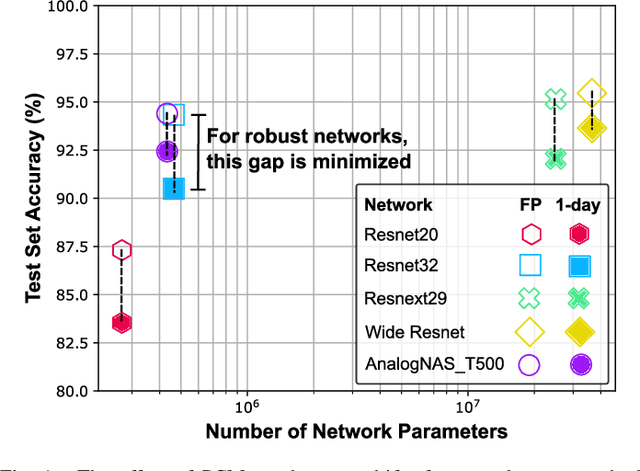
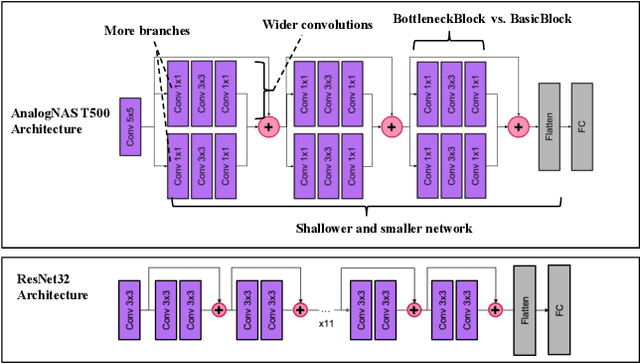
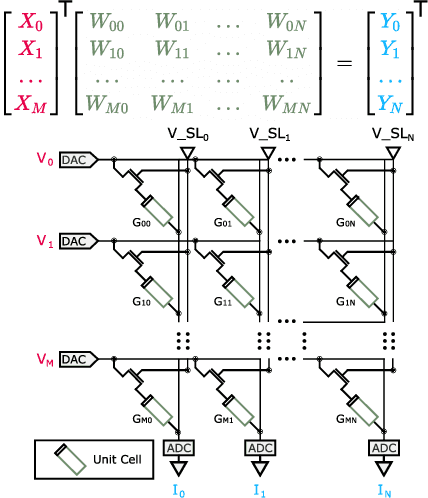
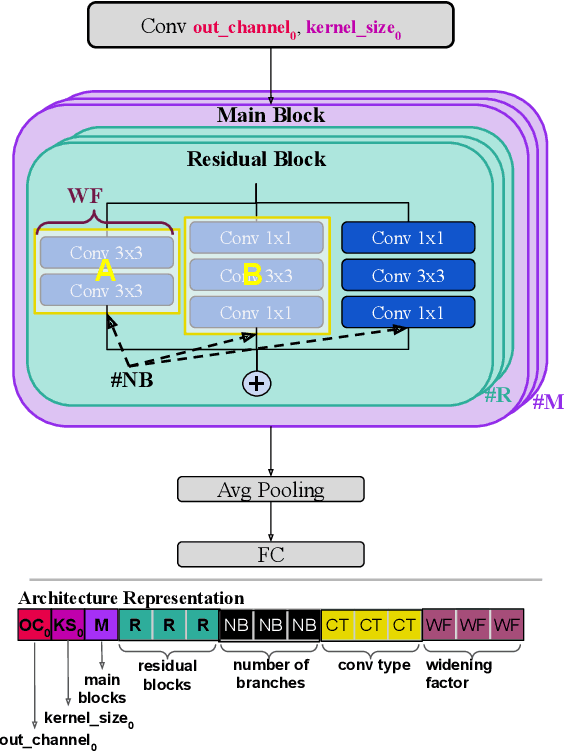
Abstract:The advancement of Deep Learning (DL) is driven by efficient Deep Neural Network (DNN) design and new hardware accelerators. Current DNN design is primarily tailored for general-purpose use and deployment on commercially viable platforms. Inference at the edge requires low latency, compact and power-efficient models, and must be cost-effective. Digital processors based on typical von Neumann architectures are not conducive to edge AI given the large amounts of required data movement in and out of memory. Conversely, analog/mixed signal in-memory computing hardware accelerators can easily transcend the memory wall of von Neuman architectures when accelerating inference workloads. They offer increased area and power efficiency, which are paramount in edge resource-constrained environments. In this paper, we propose AnalogNAS, a framework for automated DNN design targeting deployment on analog In-Memory Computing (IMC) inference accelerators. We conduct extensive hardware simulations to demonstrate the performance of AnalogNAS on State-Of-The-Art (SOTA) models in terms of accuracy and deployment efficiency on various Tiny Machine Learning (TinyML) tasks. We also present experimental results that show AnalogNAS models achieving higher accuracy than SOTA models when implemented on a 64-core IMC chip based on Phase Change Memory (PCM). The AnalogNAS search code is released: https://github.com/IBM/analog-nas
A flexible and fast PyTorch toolkit for simulating training and inference on analog crossbar arrays
Apr 05, 2021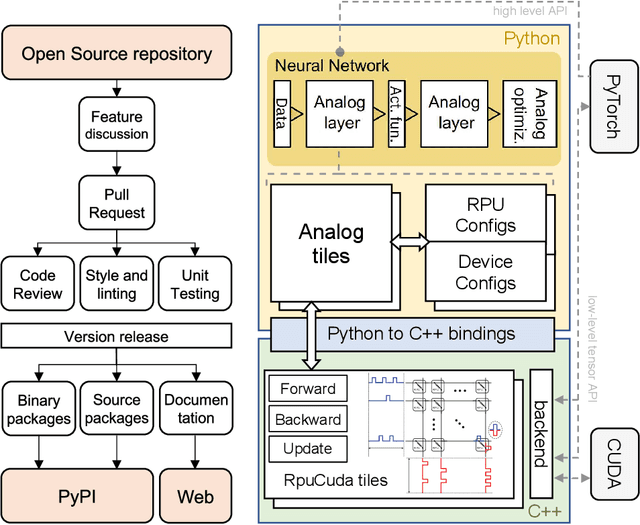
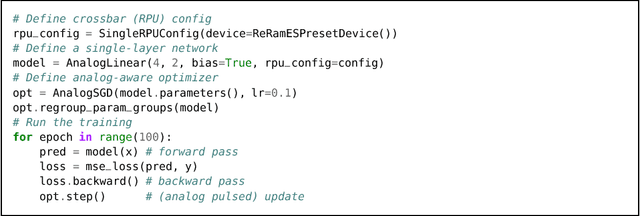
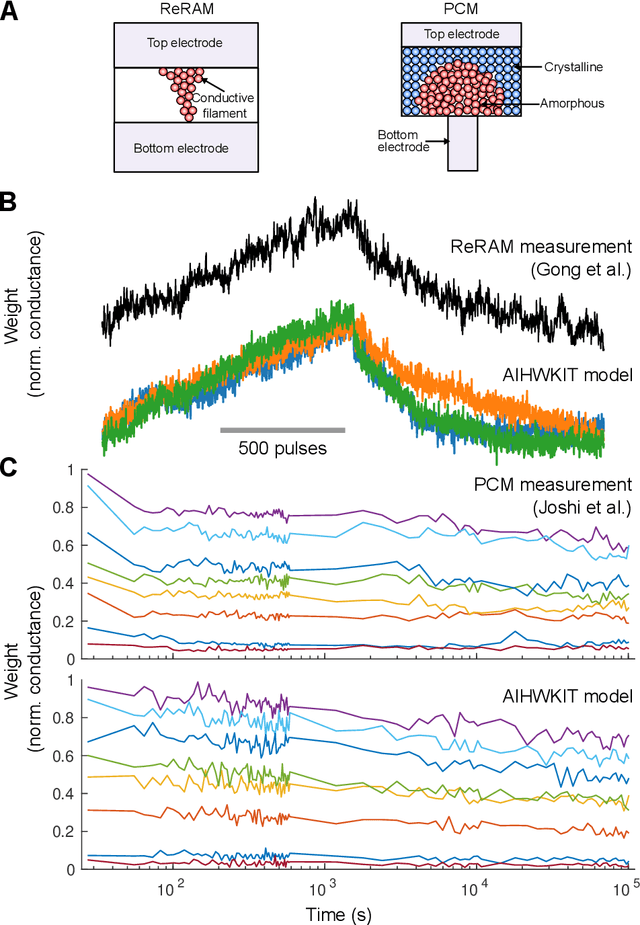

Abstract:We introduce the IBM Analog Hardware Acceleration Kit, a new and first of a kind open source toolkit to simulate analog crossbar arrays in a convenient fashion from within PyTorch (freely available at https://github.com/IBM/aihwkit). The toolkit is under active development and is centered around the concept of an "analog tile" which captures the computations performed on a crossbar array. Analog tiles are building blocks that can be used to extend existing network modules with analog components and compose arbitrary artificial neural networks (ANNs) using the flexibility of the PyTorch framework. Analog tiles can be conveniently configured to emulate a plethora of different analog hardware characteristics and their non-idealities, such as device-to-device and cycle-to-cycle variations, resistive device response curves, and weight and output noise. Additionally, the toolkit makes it possible to design custom unit cell configurations and to use advanced analog optimization algorithms such as Tiki-Taka. Moreover, the backward and update behavior can be set to "ideal" to enable hardware-aware training features for chips that target inference acceleration only. To evaluate the inference accuracy of such chips over time, we provide statistical programming noise and drift models calibrated on phase-change memory hardware. Our new toolkit is fully GPU accelerated and can be used to conveniently estimate the impact of material properties and non-idealities of future analog technology on the accuracy for arbitrary ANNs.
A Comprehensive Survey on Hardware-Aware Neural Architecture Search
Jan 22, 2021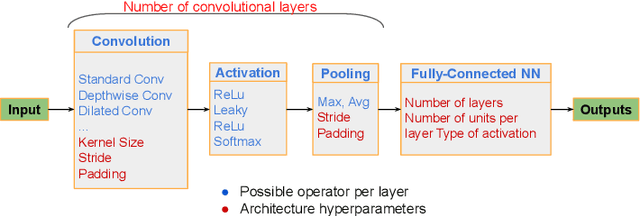
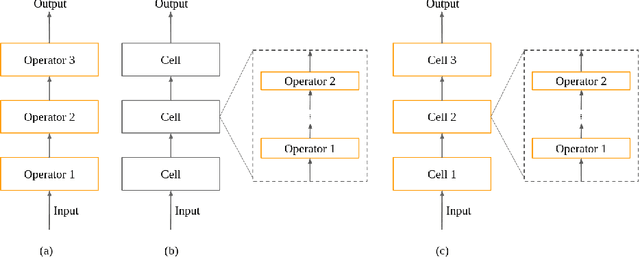
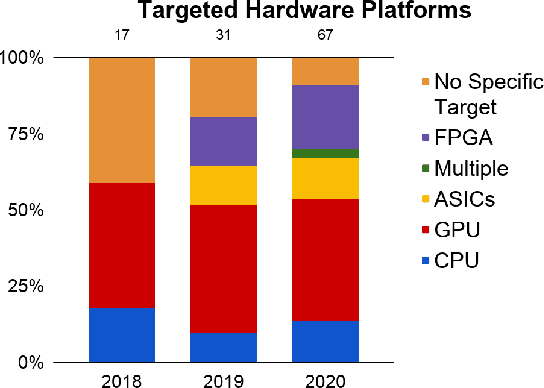
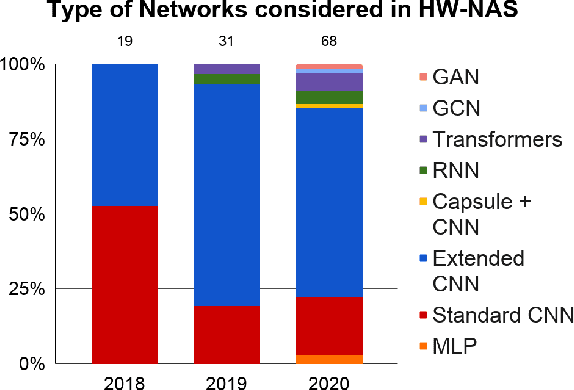
Abstract:Neural Architecture Search (NAS) methods have been growing in popularity. These techniques have been fundamental to automate and speed up the time consuming and error-prone process of synthesizing novel Deep Learning (DL) architectures. NAS has been extensively studied in the past few years. Arguably their most significant impact has been in image classification and object detection tasks where the state of the art results have been obtained. Despite the significant success achieved to date, applying NAS to real-world problems still poses significant challenges and is not widely practical. In general, the synthesized Convolution Neural Network (CNN) architectures are too complex to be deployed in resource-limited platforms, such as IoT, mobile, and embedded systems. One solution growing in popularity is to use multi-objective optimization algorithms in the NAS search strategy by taking into account execution latency, energy consumption, memory footprint, etc. This kind of NAS, called hardware-aware NAS (HW-NAS), makes searching the most efficient architecture more complicated and opens several questions. In this survey, we provide a detailed review of existing HW-NAS research and categorize them according to four key dimensions: the search space, the search strategy, the acceleration technique, and the hardware cost estimation strategies. We further discuss the challenges and limitations of existing approaches and potential future directions. This is the first survey paper focusing on hardware-aware NAS. We hope it serves as a valuable reference for the various techniques and algorithms discussed and paves the road for future research towards hardware-aware NAS.
 Add to Chrome
Add to Chrome Add to Firefox
Add to Firefox Add to Edge
Add to Edge